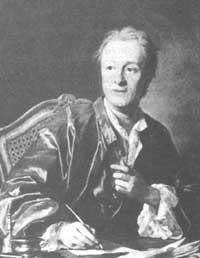Augustin Louis Cauchy
1989/07/01 Azkune Mendia, Iñaki - Elhuyar Fundazioa Iturria: Elhuyar aldizkaria
French mathematician born in Paris one hundred years ago, on August 21, 1789. On the occasion of its centenary we consider it interesting to make known its lifestyle and its works.
At the beginning of French Terrorism, in 1793, he fled with his family to Arcueil, where he met mathematician Pierre-Simon Laplace and chemist Claude-Louis Bertholet.
After being a Cauchy military engineer, in 1810 he moved to Cherbourg to consolidate the ports and fortresses of the Napoleonic fleet to invade Britain. Despite being busy, he did mathematical work and among them Joseph-Louis Lagrange sent him the resolution of a problem. He clarified the relationship between the number of sides, vertices and faces of the convex polyhedron and solved the problem of Pierre Fermat's imaginary numbers.

Cauchy returned to Paris in 1813 and Lagrange and Laplace recommended him to work only mathematics. The following year he published a report on limited integrals, based on the theory of complex functions.
Since 1816 he was professor at the Faculty of Sciences of Paris, the College of France and the Polytechnic School. When Gaspard Monge was expelled from the Academy of Sciences for political reasons, Cauchy received his chair. He also won the National Prize of the French Institute through a work of wave diffusion, which is now considered classic in hydrodynamics. In 1822 he established the mathematical theory of elasticity.
Cauchy, always using clean and precise methods, collected his contributions to three main books: Cours d’analyse de l’Ecole Royale Polytechnique (1821), Résumé des leçons sur le infinitésimo (1823), geometric calculus of infinit-Applications.
Over the years, Cauchy became entangled in these political vicissitudes. Being a resounding Bourbon, when Charles X was sent into exile in 1830, Couchy moved to Italy for not swearing the new king Louis Philip. There, at the University of Torino de Piemonte the chair of mathematical physics was created. When he ceased to take oath in 1838, he returned to Paris recovering the chair at the Polytechnic School.
He died on 23 May 1857 in the village of Sceaux near Paris.

Gai honi buruzko eduki gehiago
Elhuyarrek garatutako teknologia





